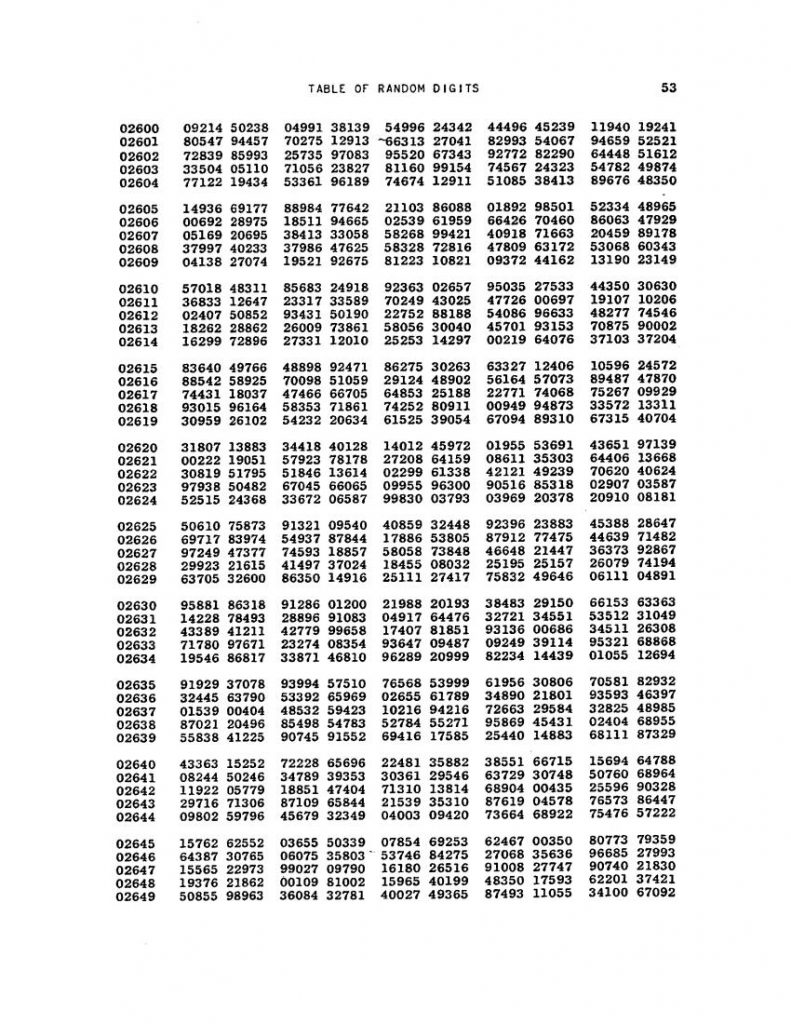Sometimes, one must obey the inscrutable exhortations of one’s soul and travel deep into the inexplicable. The planet Why? has been left far behind, the chatter of its querulous denizens nothing more than a faint wisp of static. Where I’m going, pure patternlessness is all there is.

In 1955, military-industrial complex stalwarts RAND Corporation published a huge book of just pages and pages of … digits. The digits were deliberately as random as possible, and were intended to help the fledgling practice of data science carry out truly random simulations. The book was called “A Million Random Digits with 100,000 Normal Deviatesâ€. It was also made available on punched cards, with 50 digits to a card adding up to ten boxes of 2000 cards. A single box of punched cards was about 370 × 200 × 95 mm and weighed roughly 5 kg, so these digits had heft.
I thought it might be fun (or perhaps fun?: pronounced with a rising, questioning tone to stress the might-ness of any enjoyment arising) to dig into how RAND carried out this work, create some electronics to produce a similar random stream, and see how my random digits compare for randomness with RAND’s. For a final trick, I might even typeset the whole giant table into a book that no-one wants.
As I research and progress with this project, I’ll add in links here
I must stress: there is no reason for me to do this. A $5 micro-controller board can generate tens to hundreds of thousands of truly random digits per second. Any results I produce will have no use beyond my own amusement.
A Million Random Digits with 100,000 Normal Deviates is © Copyright 2001 RAND. Apart from a couple of page images and quotations from supporting material, none of that work is reproduced here. RAND does not support or endorse my futile efforts in any way.